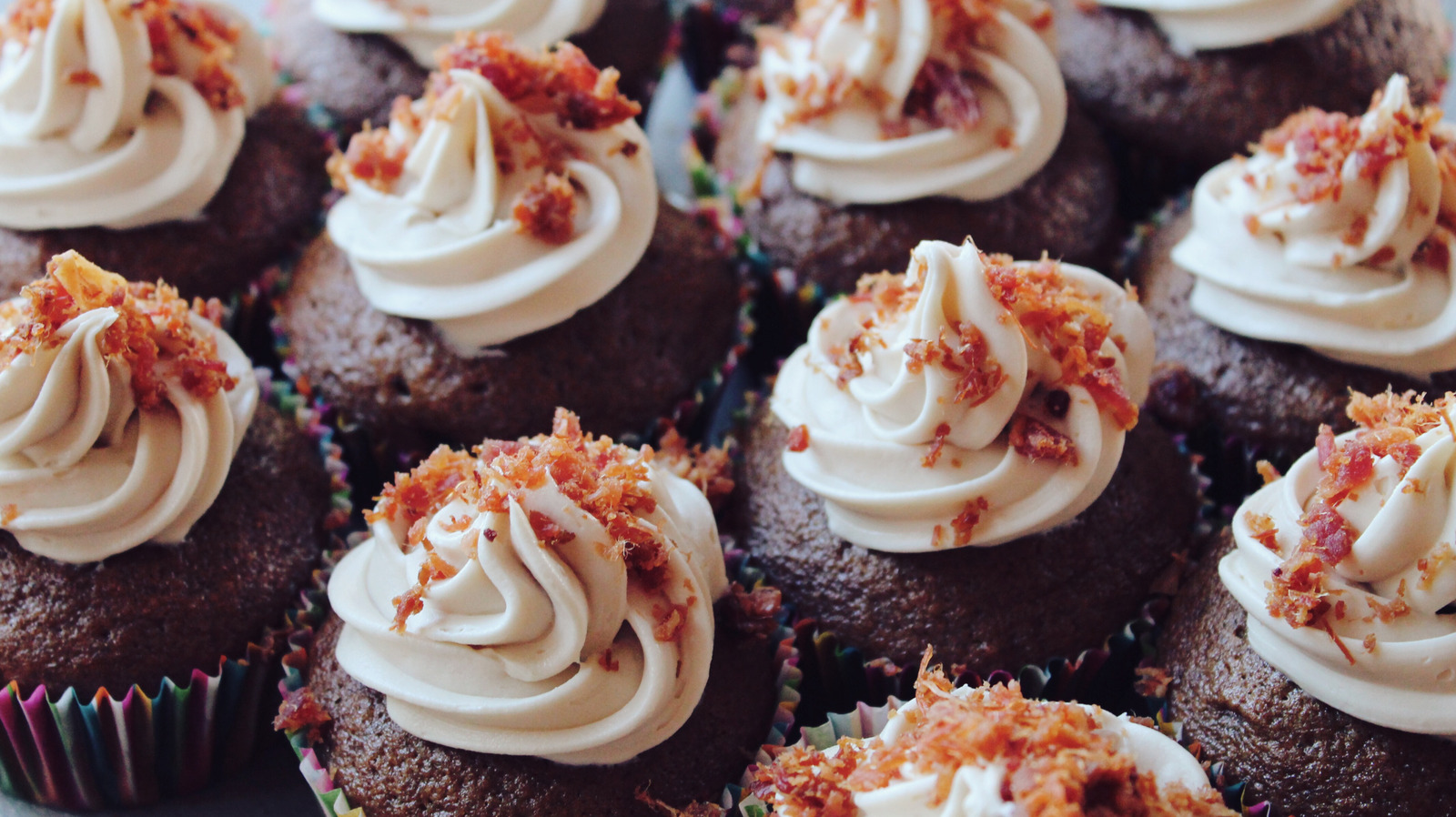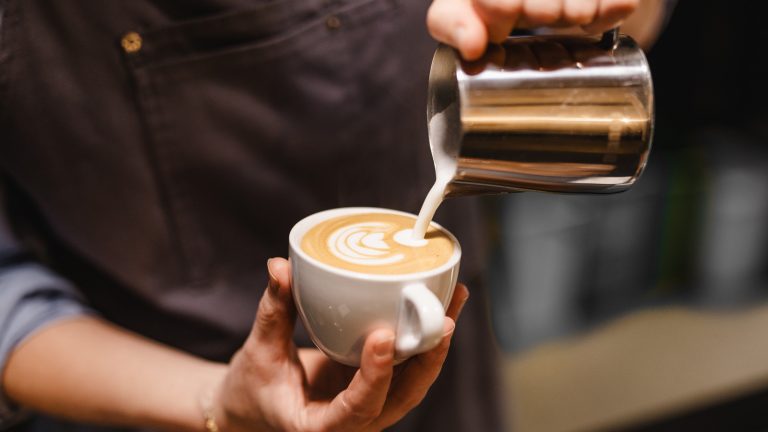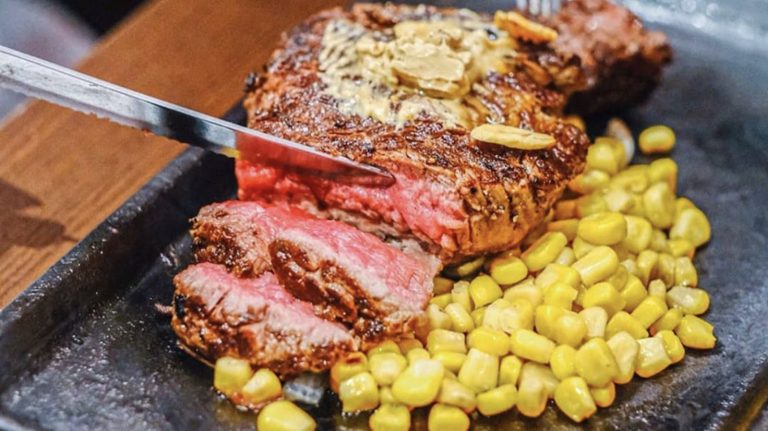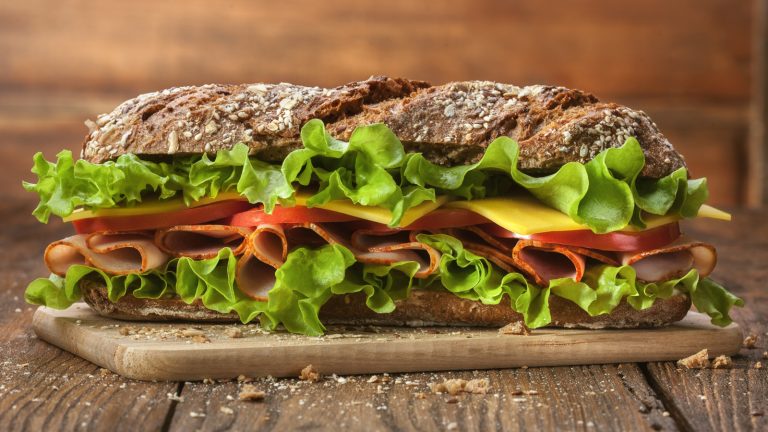Baking in the kitchen is great, but baking with a bit of bubbly is even better. Whether you want to use up a bottle of liquor you don’t usually drink or you are looking to impress your friends the next time you entertain, boozing up non-alcoholic recipes is a fun way to get creative in the kitchen. Alcohol adds an unexpected depth of flavor, a positive texture variation, and even helps some baked goods (such as cakes and breads) to keep their moisture. You can start small and use real rum in place of rum extract. Or, you can crack open a bottle of hard cider, pour a glug of stout, and dust off a flute of champagne, and dig in. Booze earns an A+ in the baking department.
With so many boozes to sample and so many things to bake, where do you begin? To figure out what alcohol and baked goods will really whet your whistle, we spoke to Carrie Gorman, bartender at SmokeTown Blues in Valparaiso, Indiana; Mireya Rodriguez of Belle Estanni in Valparaiso, Indiana; and Jessica Kramer, baker at 260 Bridge Cafe in Phoenixville, Pennsylvania.
Bourbon
Bourbon tasting notes may vary, but those with a hint of chocolate or honey make a great addition to vanilla, chocolate, or strawberry cake batter. “There are so many options out there, but for cheesecake, I like using flavored bourbons,” Rodriguez said. you could add a little bourbon to the whipped cream, too. Rodriguez also uses flavored bourbon in simple syrup or as a glaze to pour over a cake.
Bourbon has other uses, too. Aged bourbon and caramel sauce make a great pair. Just add a splash (or two) of bourbon in place of some of the liquid in your caramel sauce recipe. Then, drizzle it over ice cream, your boozy baked cake, or dunk in some apple slices for a sweetly satisfying (and mildly buzz-inducing) treat.
And when your usual muffin recipe no longer hits the same, alcohol represents a great way to take it to the next level. To get started, it helps to match the hue of the liquor to the color of the fruit in your muffins. Dark fruits work well with dark spirits, such as cherries and bourbon. It’s a good starting point to get you comfortable, but it’s not a hard-and-fast rule. In other words, feel free to play around.
“On a personal note, I’ve added bourbon to eggnog Madeline cookies and they were delightful,” said Jessica Kramer.
Whiskey
Grab a bottle of good whiskey and make a simple syrup by swapping out some of the water for the booze. Brush on the simple syrup with a pastry brush to add moisture and bump up the sweetness, or go bigger. Make an old-fashioned whiskey cake recipe that uses whiskey in the batter and in the glaze. It’s a one-two punch of flavor that whiskey fans can’t resist. Don’t stop there. Add a bit of whiskey to heavy cream and whip up another level of whiskey-loving flavor. It’ll make the next cake you bake one for the recipe book.
While you may be used to the typical whiskey options, flavored varieties are also worth a look. “Ol’ Smoky Peanut Butter Whiskey is the best peanut butter flavor there is,” Gorman said. Rodriguez agrees, and suggests using peanut butter whiskey in mousse, scones, or a chocolate soufflé. Splash it into a peanut butter or chocolate cake batter for a cake like no other. Fireball may be a popular shot, but it also works wonders in cake. “We did a cake with a kick, and added Fireball [to the batter], and in the mouse filling. It was good and different,” Rodriguez said.
Rum
While Italian rum cake is a great dessert option, rum can do far more (and chocolate is where it really shines). Stick to a lighter rum for any kind of white cake (or even cookies) and use it to brush baked cakes to keep them from drying out. Rodriguez says coconut rum is particularly good in crème brulée and lemon bars. Or, get the flavors of horchata in a cake with minor additions to your favorite vanilla cake batter. “My favorite for cakes is RumChata. Add a hint of cinnamon and RumChata to a vanilla cake batter, and it reminds you of horchata,” Rodriguez said.
Try rum in your next batch of brownies (the fudgier, the better). You can go as dark as you dare — as in blackstrap rum kind of dark — when you’re dealing with deep, dark chocolatey desserts. Not enough? Then up the oomph the next time you bake up a loaf of Stollen, a traditional German pastry bread. “We soak dried candied fruit in rum for 24 hours. We make it with the rum-soaked candied fruits (orange, currants, lemon), marzipan, almonds, butter, sugar, milk, and eggs. Brushed with butter after baking and rolled in powdered sugar, [they say] its shape is supposed to resemble baby Jesus wrapped up in a swaddle,” Jessica Kramer said.
Amaretto
Almond extract is overrated and overused, but you can add unexpected complexity with an unsung liqueur hero: Amaretto. This thicker, almost syrupy Italian cordial is a real star, thanks to its sweet yet oh-so-slight bitter undertones. Add a touch of Amaretto’s almond flavor to baked goods that could use a little boost. Any nut-filled cake or pound cake is an instance where a simple syrup made with amaretto could add some real pizzazz. Amaretto is especially awesome in heavier poke cakes, or the kind of cakes involving poking holes in the bottom. It allows the boozy liquid to really penetrate the cake throughout.
Cakes aren’t the only baked good to benefit from a little amaretto. Desserts including pies (fruit-based or cream pies), crisps, cobblers, and even custards or puddings, can help let amaretto (or other sweet liqueurs) up their almond flavor factor. It’s the kind of boozy addition that doesn’t take much to enhance anything you throw it in.
Vodka
Many pie bakers swear by adding a touch of vodka to butter-based pie dough or tart shells for the flakiest crust. Just chill it first for an easier time with the rolling pin. This flaky texture guarantee makes sense, thanks to the alcohol’s inhibiting effect on gluten development. Don’t worry. Plain vodka in pie dough won’t add flavor, but it will add phenomenal texture. Apply that gluten-inhibiting thinking to traditional shortbread dough for a melt-in-your-mouth crumb.
Vodka and vanilla may be the traditional flavor match-up (just look at every cold-weather cocktail menu), but vodka and chocolate or even vodka and lemon are an unexpectedly nice and light combination. Use vodka the next time you make a cheesecake with any of those flavors. Chocolate or lemon cake batter will happily embrace a generous pour of vodka. Your favorite lemon bar recipe can use vodka, or perhaps your favorite lemon recipe can use a lemon-flavored vodka.
Brandy
This grape-based alcohol is a distilled spirit, not a wine, even though Cognac and Armagnac are types of brandy made in specific French regions. These days, brandy isn’t as common an alcohol as it was, say, 60 years ago, when it was a common after-dinner drink. Moviegoers in 1962 caused an uptick in brandy popularity thanks to the movie “Days of Wine and Roses” and its Brandy Alexander mention. However, this 17th-century go-to still deserves a spot in your kitchen pantry or home bar. What can you do with brandy? Make your own vanilla extract with a brandy base — it will add a depth of flavor that even pure vanilla extract can’t match.
The flavors of brandy vary a lot. The best brandy to use in baking should taste complex, but not overwhelming. The aging process and alcohol content affect how successful a brandy substitute will be. Choose a milder brandy for more delicate desserts. Yes, it would be great in fruit cake, too, or any other heavier fruit-based cake recipe. And for a real taste sensation, add brandy to sugar cookie dough. A little goes a long way, though.
Coffee liqueurs
Of all the coffee liqueurs, Kahlua is one of the best known. It originated in Mexico in 1936 and it can do so much more than make a mean mudslide. Rodriguez recommends adding Kahlua to snickerdoodle cookies. Kahlua’s nice coffee note also really sets off chocolate cheesecake, tiramisu, or brownies (the richer, the more chocolatey the brownies, the better). Or, reach back on the bar shelf for the flavored Kahlua you received as a gift and didn’t know what to do with it. Vanilla Kahlua, Hazelnut Kahlua, Salted Caramel Kahlua — they can all contribute to the right baked good (otherwise known as chocolate). Get a minty kick in there with mint mocha coffee liqueur. Mix it into heavy cream for a bigger wallop of minty coffee undertones.
Put the coffee back in the coffee cake with a coffee liqueur. Add a touch to the cake batter and, maybe, add a good glug to your morning coffee to go with it. But feel free to branch out to other coffee liqueurs. “Try using Kahlúa, Baileys, or Tia Maria in a tres leches cake,” Rodriguez said. Tia Maria is a sweet, cold brew coffee liqueur that’s perfect when you want a stronger coffee flavor.
Champagne
Pink champagne has been a popular beverage since 1764, but it’s used for far more than toasting. Okay, maybe not by Madame Lily Bollinger, who ran the Bollinger Champagne House until 1971, and decreed it a drink fit for women of ill repute. But we know better. Champagne, pink or not, pairs well with airy desserts like mousse. But you may need to use an unflavored gelatin packet to help the mousse set. Cakes and cupcakes are a top choice for pink champagne, or rosé champagne. You’ll see it most often for certain traditionally pink-themed events, such as a bridal shower or engagement party. Although any pink champagne will do, French sparkling rosé, or Crémant, has a lovely color (and great flavor).
Alcohol can affect the structure of a cake. If you choose to add champagne to a cake or cupcake recipe that doesn’t call for it, you may need to add a little water to adjust for the difference. And, as with other types of liquor, champagne can help lock in moisture when used as a simple syrup or applied gently on its own with a pastry brush.
Stout
Stout may have begun in the 18th century as a heavier porter, but it’s long been a popular choice (becoming the U.K.’s fastest growing beer in 2018). You may know stout by the brand Guinness, but there are different types of stout, such as chocolate, oatmeal, and Imperial stout. Chocolate stout is a great introduction to baking with this type of ale.
Milk stout contains lactose, which adds a sweetness not found in some other stouts. Oatmeal stout could also be a liquid replacement contender, with its sometimes roasty, nutty, and sometimes bitter or chocolate flavors. It’s probably not hard to guess that chocolate baked goods and stout are a natural fit. See also: Chocolate stout cupcakes. Fudge, breads, and brownies (as always) win in the game of “what works best with stout.” But with so many stouts available, you’ll have to experiment to discover what best aligns with your taste buds.
Hard Cider
There’s a reason why Johnny Appleseed planted apple trees for hard cider: It’s delicious. Hard ciders vary greatly in terms of sweetness. You can actually figure out if a hard cider is a good hard cider by reading the label (unfamiliar apple varieties equal a better cider). Use a decent hard cider in cupcakes and other more substantial baked items. You know and love beer bread. Make the alcoholic cider switch for hard cider bread instead.
Try using a little hard cider the next time you make apple crisp or, really any sort of apple dessert for an extra dose of apple-y goodness. From apple pandowdy to apple strudel to good ol’ apple pie, layer in the apple flavor. Consider using hard cider in recipes with other fruits that naturally complement apples, such as cranberries, blackberries, raisins, and pineapple. If adding liquor willy-nilly is too intimidating, start small and substitute hard cider into any recipe calling for apple juice or grape juice.
Tequila
First commercially distilled in 1758, tequila and margaritas may go hand in glass, but this distilled spirit has plenty of other uses. Perk up a plain pound cake with a boost of earthy tequila. Use it in the batter and the glaze. Try adding it to the batter, syrup, and frosting for spiked margarita cupcakes. Or, really, any sort of citrus-based dessert. Yes, you likely associate tequila with lime (and salt), but in the early days those were used to mask its flavor, not enhance it. Still, tequila and citrus are a nice fit.
Don’t end the tequila baking extravaganza there. You may have made rum balls 1,000 times, but have you made tequila-soaked rum balls? Replace the rum with tequila in any baked dessert. The flavors of rum also work with pineapple, caramel, and chocolate (just like tequila), but tequila will add a little earthiness rum often lacks. Consider using tequila that has been oak barrel-aged for chocolate desserts.
“I think the important thing is to have fun creating desserts and food. Think of your favorite things and see what you can use to make them into a dessert or other food item. Don’t be afraid to experiment, have fun, and don’t be afraid to try flavors,” Rodriguez said.





